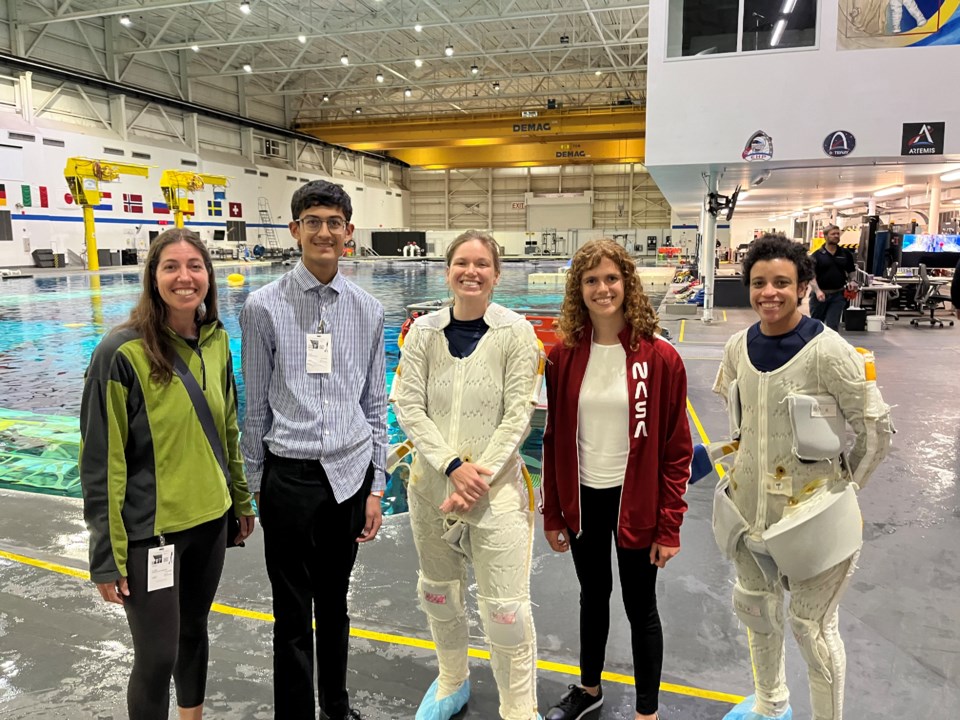Yash Deshpande and Violet Oliver are graduating seniors at Niwot High School. The two teamed up to participate in the NASA Hunch Biomedical Science competition. They were selected as finalists in Colorado and traveled to Johnson Space Center to receive feedback on their prototype.
NASA Hunch Biomedical Science competition is a program designed to inspire and empower students to launch their careers by designing and fabricating products for NASA, according to the program’s website.
“These are real, actual problems that NASA hasn’t solved yet — that is the whole purpose of NASA Hunch — and they are reaching down to the high school level because they want students who the sky is beyond the limit for them and they are not tied down like industry professionals are and they aren’t so focused on one thing that they miss seeing everything else,” said Jayme Sneider, bioscience pathway manager for SVVSD.
NASA hears the ideas of the finalists and can use or combine ideas to solve problems it is facing. The finalists don’t win a prize in the traditional sense of a competition. Once students reach the finalist level they are invited to Johnson Space Center to present their ideas. They receive feedback from astronauts who have spent over 300 days on the International Space Station and executed numerous missions, flight surgeons and NASA research and development employees. The students also become contractors with NASA and should NASA use any of their ideas, the students are invited to participate in its development.
St. Vrain Valley schools had teams from Lyons, Erie, Apex, Niwot and Launch Ed participate in the program. Three SVVSD teams participated in the state competition in Golden but only Deshpande and Oliver’s project advanced to national finals.
Deshpande and Oliver decided to tackle the problem of sleeping on the International Space Station. According to Oliver, astronauts experience 16 sunrises and sunsets in a 24-hour period which impacts their circadian rhythm. The duo also recognized the strain on astronauts’ mental health in space.
They took the idea of a weighted blanket and adapted it to space. In space, there is no gravity to hold the astronauts down while they sleep. Astronauts are unable to find a surface to rest their bodies against in order to convince their bodies that it is in a similar environment to Earth. This prevents them from getting the rest they need each day.
Despande and Oliver worked with the idea of a weighted blanket that applies compressive force on the body to create a sense of comfort. Since there is no gravity in space, the duo developed a ratcheting system that pulls the top layer of a blanket and pulls against the astronaut, applying a compressive force, Oliver said.
The Niwot team could hear back from NASA at any point if their project will be used on a future mission.


